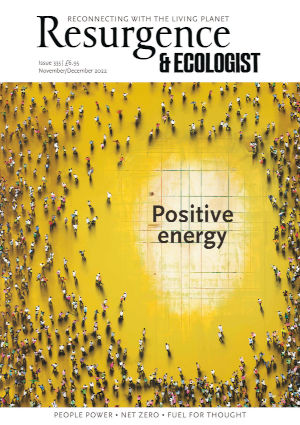The great strength of Movement, by Thalia Verkade and Marco te Brömmelstroet, first published in Dutch in the Netherlands, is its compelling anecdotes. It helps that Verkade, the main voice, takes the general, non-specialist reader on her own wide-eyed journey of discovery about how the car has taken over our lives. Most of the book is, in fact, an account of how this has happened. Anyone carrying notions of the Netherlands as a cyclist’s nirvana will have their tyres quickly burst. Such a big focus on just one country for what is a global problem works precisely because the nation under analysis is meant to be a cycling success story. How bad things are is brought home by some of the more desperate attempts to make car-dominated urban spaces less hostile. At one junction where a young boy cycling was killed by a distracted driver, the boy’s favourite music was played by the roadside as a reminder to drive more safely. But this is the key problem the book addresses: how the rest of life and communities have been made to accommodate and work around a system designed not for people, but for the convenience of cars.
Perhaps the most profound point is that with all the effort, cost, pollution, injury and loss of life put into building this system, it has not even succeeded on its own terms. I was shocked to read about how the long-failed road planning approach of ‘predict and provide’ appeared to be still official policy in the Netherlands. It’s as simple as it sounds – planners try to solve or prevent congestion by estimating how many cars people will want to drive, and then build the roads for them. But this has long been known as fundamentally flawed. Building more infrastructure for cars doesn’t ‘meet’ some innate level of demand. It just creates more. This is known as the ‘asphalt machine’, and because it generates its own appetite for more, it’s never satisfied. In an almost perfect example of a climate policy death spiral, we learn that the Dutch road expansion programme was paid for from the country’s windfall profits from exploiting its fossil fuel, gas.
The failures live indelibly in figures. In 2010 traffic jams were three times as long as in 1988, the number of jams increased 50% between 1997 and 2010, and the length of jams doubled in a seven-year period.
The one cautionary tale about the book is that the title might lead you to expect a handbook on car resistance, whereas the majority of the content exposes the mechanics of continuing car dominance. There’s a reason for this. Cars are still in control, even today in the teeth of the climate and air quality crises, and the fightbacks feel like vigorous but disparate and too few green shoots cracking through the tarmac. But they are there, local successes, alongside an ‘ideas for action’ section added to the new edition. For those wanting more hope, a wide range of vivid examples can be found on the stories map of the campaign at carfreemegacities.org, where the single lesson is that car reduction is always initially resisted, but subsequently accepted, and then welcomed in the long term.
And the book works admirably as a primer on trade secrets of the transport policy world. Things like Marchetti’s constant for example: the little-known fact that for all the additional infrastructure built, people still spend the same amount of time travelling now as they have for decades, but just travel further. Also how, early on, cars were universally seen as a danger to people, until the industry reframed driving as a freedom and, in the United States, conceived jaywalking as a crime, to shift the burden of blame for pedestrian killings and injuries away from cars and onto their victims. I finished the book wishing that the resistance to cars in 1970s Amsterdam had spread sooner. That city saw roller-skating on motorways and an early version of car-free Sundays. Like during lockdown under Covid, streets were given back to children for play. Movement gives hope but is also a terrifying account of the power of the status quo.






